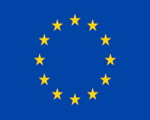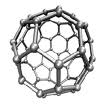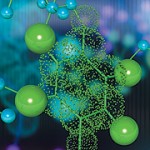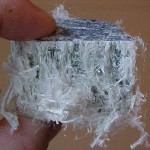 As various articles on this blog (Search: EU) have demonstrated over the past couple of years, the EU has been more proactive than the U.S. in targeting potential health and environmental risks posed to consumers by nanomaterials and seeking to generate and compile relevant and helpful information with an eye toward appropriate regulation. The EU scientific panel is now calling for comments on opinions of the EU Scientific Committee on Consumer Safety (SCCS) on several nanosubstances used as sunscreens in cosmetics.
As various articles on this blog (Search: EU) have demonstrated over the past couple of years, the EU has been more proactive than the U.S. in targeting potential health and environmental risks posed to consumers by nanomaterials and seeking to generate and compile relevant and helpful information with an eye toward appropriate regulation. The EU scientific panel is now calling for comments on opinions of the EU Scientific Committee on Consumer Safety (SCCS) on several nanosubstances used as sunscreens in cosmetics.
The opinions posted for comment indicate what is known about these substances and point to the gaps in the studies. For example, with regard to dermal absorption of titanium dioxide nanoparticles, SCCS states, in part:
“[T]here is a body of open literature on this subject. The evidence from these studies supports the conclusion that TiO2 nanoparticles are unlikely to penetrate across the skin to reach viable cells of the epidermis. . . . Studies have also shown that TiO2 nanoparticles do not penetrate the (simulated) sunburnt skin.
– Despite the extensive database showing a general lack of TiO2 nanoparticle absorption via the dermal route, there are a few gaps in the knowledge. For example, it is not clear whether TiO2 nanoparticles will be able to penetrate through cuts and bruises, or over repeated or long term applications of a sunscreen formulation.
– A number of studies have indicated that TiO2 nanoparticle can enter the hair follicles and sweat glands, and that they may remain there for a number of days. This is a scenarioin which TiO2 nanoparticles are likely to get and remain in a close proximity to the living cells for a length of time. A photocatalytic nanoparticle in such a situation may cause . . . potential harmful effects when exposed to sunlight. . . . [M]ore data would be needed to justify the use of those TiO2 nanoparticles in skin applications that have a considerablelevel of photocatalytic activity.” (Scientific Committee on Consumer Safety SCCS,Opinion on Titanium Dioxide (nano form), p. 97)
The document also indicates the need for study of the potential of these substances of the nano-related properties of the substances to be mutagenic or genotoxic. (p. 97-98)
These few small examples of the more extensive information contained in the opinions gives a sense of where the SCCS’s attention is currently on nanosubstances in cosmetics, which is one of the most pervasive uses of nanosubstances in consumer use. With study of such materials moving along in laboratories around the world, it is essential that the information be collected and evaluated to determine what risks, if any, may be presented to consumers by the nanoscale properties of the substances. The EU is moving in the right direction.
All of the SCCS opinions are available at




 In my most recent entry
In my most recent entry The National Academies have promised a report by the end of January 2012 on priorities (both short- and long-term) for studying the health, safety, and environmental effects of nanotechnology. According to the National Academies, this report will address the following matters: the properties of engineered nanomaterials; methods and technologies for “detecting, measuring, analyzing, and monitoring” engineered nanomaterials; what studies are needed; what testing methods need to be developed; the models for predicting impacts that should be developed; research priorities; and the criteria for evaluating research progress. In its “Statement of Task,” the National Research Council has explained:
The National Academies have promised a report by the end of January 2012 on priorities (both short- and long-term) for studying the health, safety, and environmental effects of nanotechnology. According to the National Academies, this report will address the following matters: the properties of engineered nanomaterials; methods and technologies for “detecting, measuring, analyzing, and monitoring” engineered nanomaterials; what studies are needed; what testing methods need to be developed; the models for predicting impacts that should be developed; research priorities; and the criteria for evaluating research progress. In its “Statement of Task,” the National Research Council has explained: An interesting and potentially revolutionary development in magnetic storage of data was announced a couple of weeks ago. Researchers at I.B.M. have reported the development of a new class of nanomaterials that could lead to the development of new, significantly smaller memory chips and disk drives that will both hold vast amounts of information and use less power than the current class of silicon chips. The report (Loth, Baumann, Lutz, Eigler, and Heinrich, Bistability in Atomic-Scale Antiferromagnets) appears in the journal Science at Vol. 335, no. 6065, pp. 196-99 (Jan. 13, 2012), and has been widely reported in the news media. There is much excitement over this development, both for its inherent promise for data storage and for its potential in other areas. Analysts have suggested that other new nanomaterials may be forthcoming using some of the same general methodologies and approaches of these researchers.
An interesting and potentially revolutionary development in magnetic storage of data was announced a couple of weeks ago. Researchers at I.B.M. have reported the development of a new class of nanomaterials that could lead to the development of new, significantly smaller memory chips and disk drives that will both hold vast amounts of information and use less power than the current class of silicon chips. The report (Loth, Baumann, Lutz, Eigler, and Heinrich, Bistability in Atomic-Scale Antiferromagnets) appears in the journal Science at Vol. 335, no. 6065, pp. 196-99 (Jan. 13, 2012), and has been widely reported in the news media. There is much excitement over this development, both for its inherent promise for data storage and for its potential in other areas. Analysts have suggested that other new nanomaterials may be forthcoming using some of the same general methodologies and approaches of these researchers. I have written
I have written 
